Many of you have probably seen Jules Eden’s recent trip report to Central Peru on Surfbirds and Cloudbirders. There are some typos and misspelled site names, so with Jules’s permission, these are corrected below.
BREAKOUT BIRDING 2 – NOVEMBER 2020
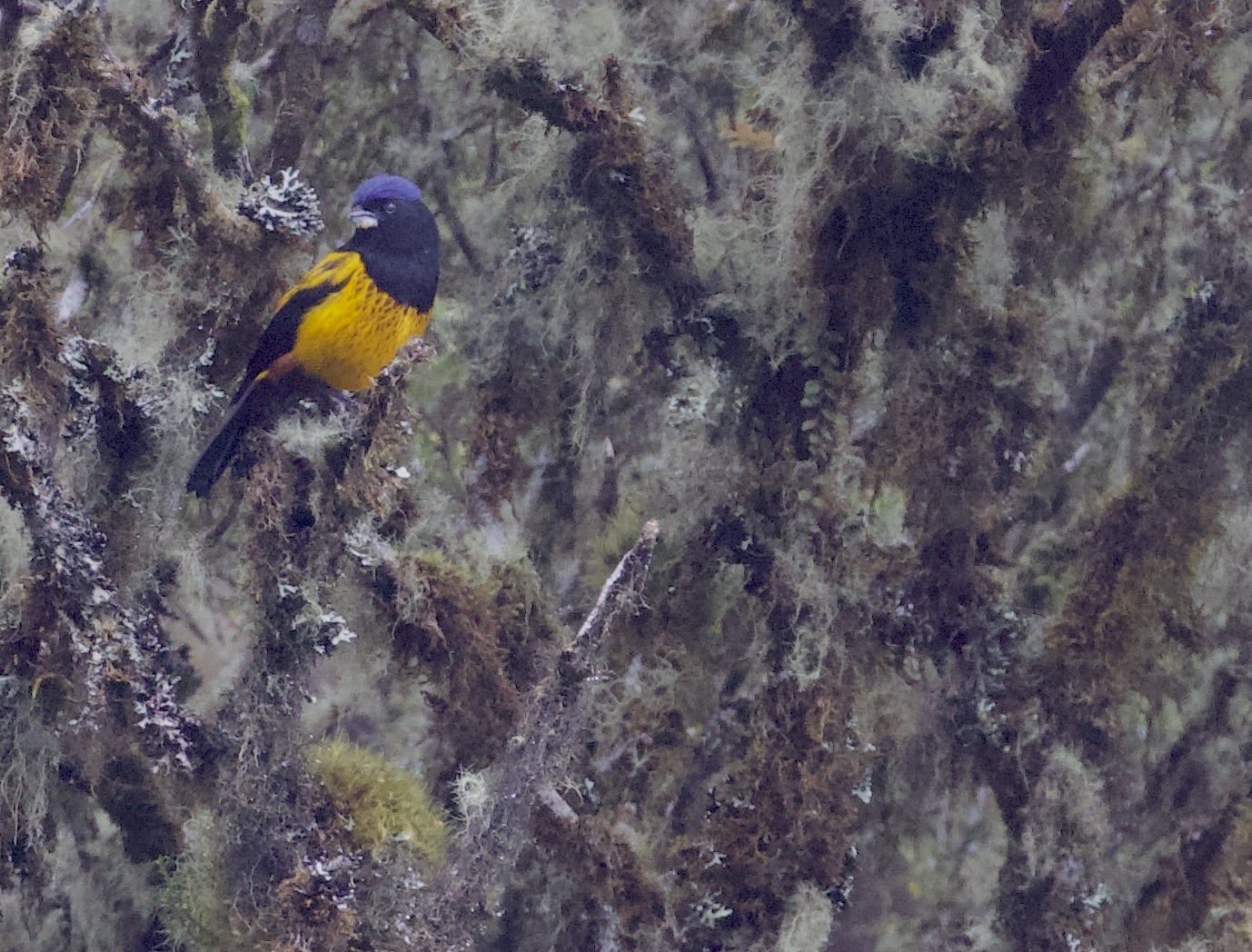
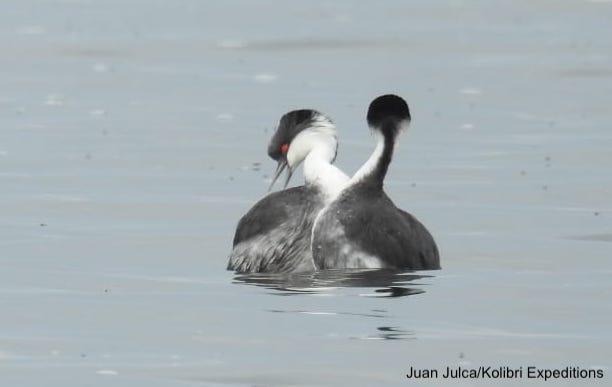
Mandatory pictures of a Junin Grebe and Golden-backed Mountain-tanager that MUST start every trip report from Central Peru!
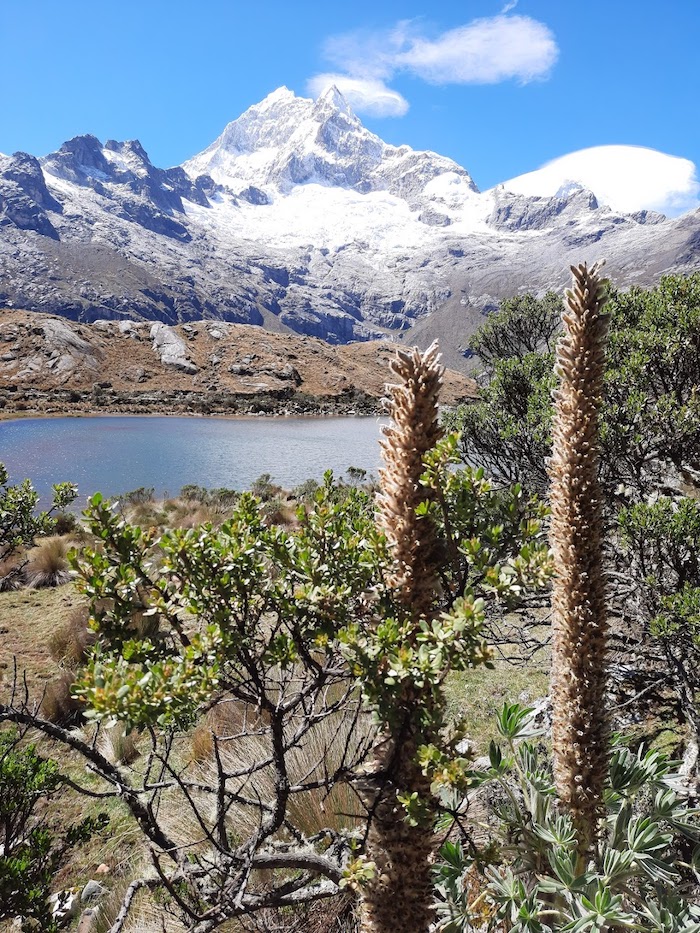
CENTRAL PERU
Tapaculos, Canasteros and Sp.Novos
By Jules Eden.
With
Kolibri Expeditions
www.kolibriexpeditions.com
Guide – Gunnar Engblom. Driver – Manuel, aka Fat Tony
Why and When and How
Another lockdown coming. I don’t think I can do this one. The last was like a prison sentence. 100 days ticked off in the cell of my house, with nothing open bar walking a dog on Clapham Common and Asda for more panic bought loo roll.
Boris has promised that it’s only a month, but I reckon they will extend to fit whatever is dictated by the epidemiologists that run our lives now.
We had an exit plan. My wife’s sister can put us up in Stockholm so we took the first flight there.
A week, and in that time I had sorted flights to Lima, Peru. But you can only enter that country from 5 airports in South America.
2 days in Quito were enough to sort negative PCR certs to get entry to the Land of Llamas.
And I was there. At last. 48 hours travel and Gunnar from Kolibri Expeditions was near the airport to get me birding.
DAY 1 – Line Taxis
There’s already someone on the tour – he came out a week before me and so Gunnar has peeled back off from this trip to get me from the airport to Hacienda Armorique to hook up with Pete from NY, USA.
In a country with no trains and slow buses, the only way to get there in any sort of haste is to get a succession of taxis from town to town so after our gig they have another one to get back home.
We lucked in – we were heading for La Merced via the Central Highway, and at a weekend – our driver actually lived there and wanted to see his family.
The only problem was that a Lima-plated taxi could not cross a state line without a good reason.
That explained why we pulled over and Gunnar switched seats with the driver and drove. We were pulled up, the Feds had never seen a Swedish driving licence before and let us through to join the Andean traffic slowly moving over the range to the Eastern side.
It took 8 hours in the end, but that is normal for the Andes – but we did stop at a freezing lay-by to walk across some peaty area to get a WHITE-BELLIED CINCLODES and WHITE-FRONTED GROUND-TYRANT.
The former is uber rare, the latter dead common.
That’s the same amount of newbies as my whole trip to the Azores a few months ago, and in 100 metres, but admittedly with an altitudinal exhaustion of the 4800m we were at. Gunnar springs from tuft to tuft of the peaty bog. He does marathons in his spare time. I wheeze after him.
We arrive to the Hacienda at night. Reminiscent of a French farmhouse with barns, side rooms and dusty old tractors, I turn down the offer of a coffee from their own plantation and crash in a room still bedecked with a calendar from 2005. Sleep is quick with thoughts of all the UK birders who did not get out and are at home watching graph-deaths on TV whilst being fined 200 quid for trying to fly to the Canaries. Ridiculous.
DAY 2 – Owl quandary
We are up and attem at 4 a.m. Hacienda has a home-boy birder who has a spot for the rare owl. We bounce through the bad track to get into position.
Juan and Pete, whom we have met bleary-eyed earlier and have been birding before I came are first on the reply. And first on the bird. It’s so close Gunnar has to move back a bit to get it in focus. CLOUD-FOREST SCREECH OWL. Touching distance. Gunnar fills a memory card and we hear another call.
OCELLATED POORWILL comes out to playback. Wowzers, this is one of those birds I thought I would never see, ever. And there it is, on a horizontal log, all spotty and very small. That might actually complete my “ocellated” needs. Tapaculo, crake…anything else? Wait for the Big Book back home for that one.
Back to the van for my first of the “Kolibri Expeditions Famous Field Breakfasts” “KEFFB – Copyrite Gunnar” and Gunnar goes through his owl photos, whilst poor Fat Tony has to replace a flat tyre.
Turns out the Cloud-forest could be a Rufescent from the photos. But on review, it seems the Bolivian version is all spotted up the neck, but the Peruvian is not. It’s a cloud-forest but jeez, if it goes on like this we will need more DNA testing than an airport Covid lab has – to get the results we need.
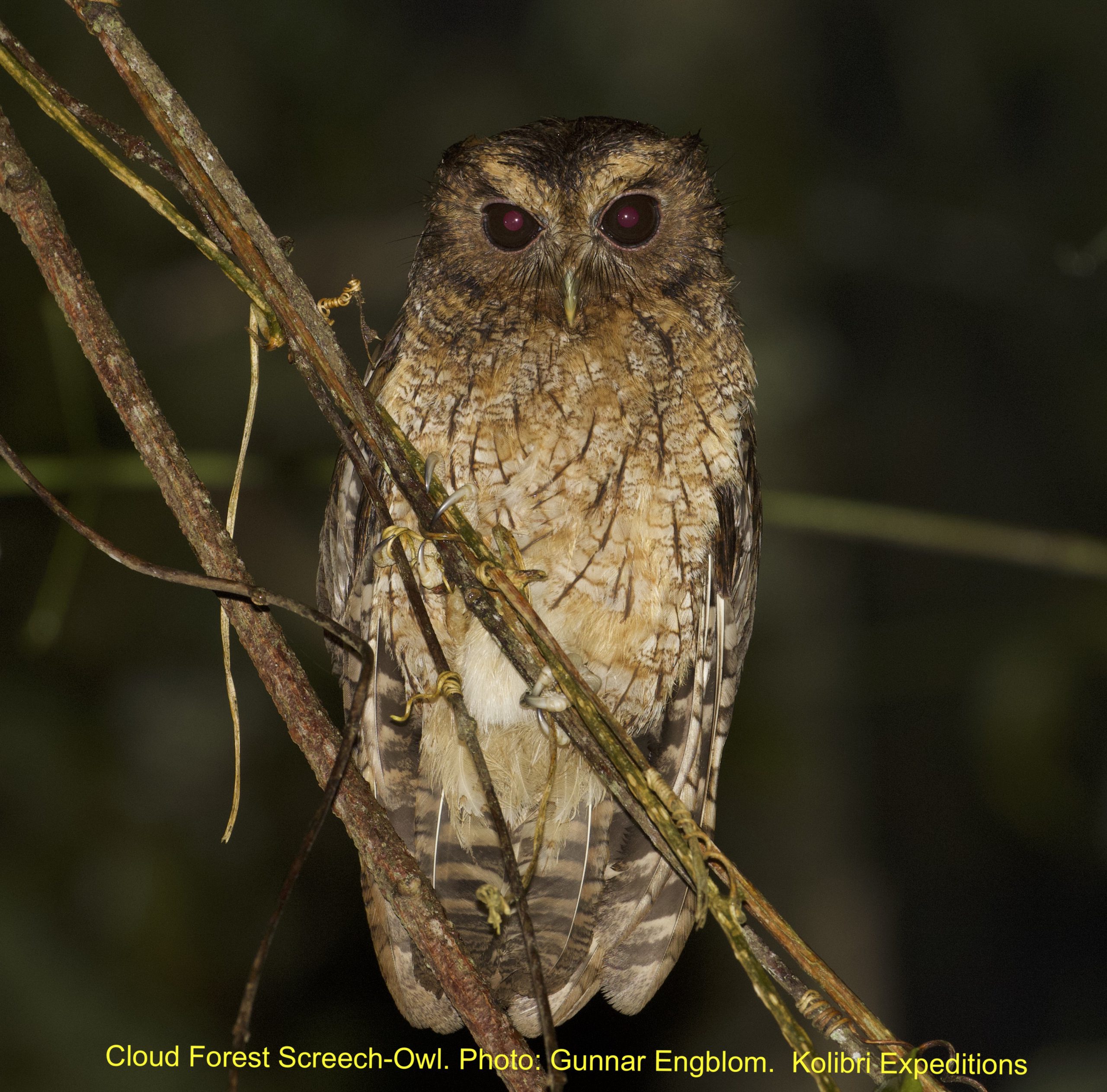
Because of earlier birding relationships, Pete goes with the Juanista, I am with Gunnar.
It works thanks to Pete’s empathy. They get and call me in for BROWN TINAMOU and CREAMY-BELLIED ANTWREN.
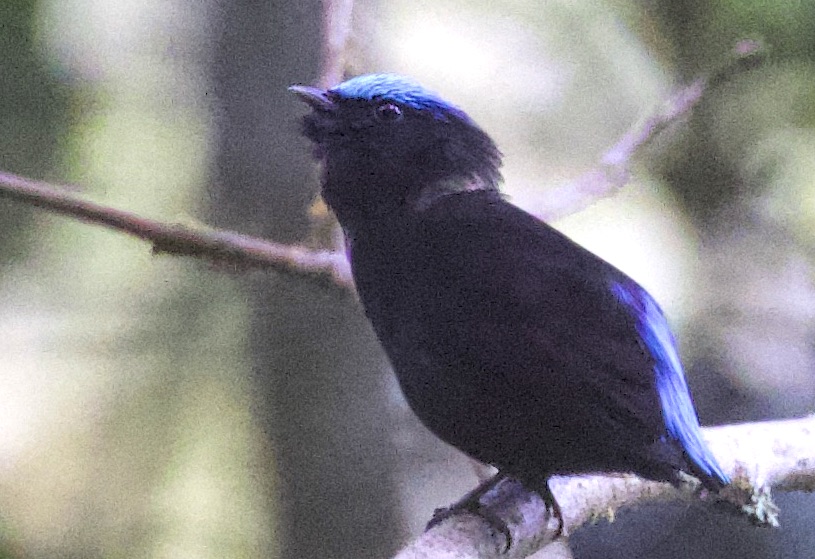
Caerulean-capped Manakin
CAERULEAN-CAPPED MANAKIN soon follows but despite several fly-bys I cannot get onto the new sicklebill hummer for me. Blame the jet-lag and Covid, I say.
Check-out from the Hacienda, and off to Satipo via a couple of roadside crakes* and seed-finches that Pete needs.
*[Birding Rule # 34 – if you have seen a rallid before – you will always get it easily the next time. The trick is to look where you think it is not, it will appear like an old girlfriend at your next first date]
We arrive at Peru’s new Mindo to find the rooms we have booked are occupied by sewage workers. A 2 hour drive back and promises of accommodation for the next day lead us to a hotel in the town of Satipo.
DAY 3 – El Gordo
This day was the biggest hitter for me on the whole trip.
A 4 am roll out from Satipo got us to Calabaza at 6am, with the new shocks installed by Tony and an overnight welder in place.
Bags dropped at the new accommodation and off round the corner for a Bay Antpitta. Except it wasn’t.
Even I could tell this was different from the book. 1 note short on the call. A huge bare blue eye-ring. Not a Bay Antpitta. A new species. It was first noticed by an Israeli photographer getting all the shots of the world’s antpittas for a coffee-table book. He mentioned it to Gunnar and said “keep it for me”, but since then has never returned.
It’s new. I shall call it a “Calabaza Antpitta” but as we all know- avian taxonomy moves slower than evolution itself, so it will stay Bay for years to come.
Up the hill and round the corner are EYE-RINGED THISTLETAIL and FIERY- THROATED METALTAIL, soon followed by one of those Rufous splits, the “Junin Antpitta”. I am a bit lost with all this, especially as the “obscura” has gone 3 ways depending on which Andean valley you are in.
“Whatever” as they say in South London.
From this leafy area, we go uphill for an hour to a rocky Polyepsis zone where G- man has seen rare cotingas in the past. A Slaty Brush-finch of the Tackanowskis variety shows. This should be a good species as all Slaties north and south were split – but apparently due to lack of sample size – this one wasn’t. Gunnar had actually contacted the scientists directly with his queries – I admire his persistence here. Amethyst-throated Sunangel and Brown-backed Chat-Tyrant are the appetiser for a LINE-FRONTED CANASTERO and a couple of CREAMY- CRESTED SPINETAILS.
Gunnar shouts – he is way over some huge boulders and has flushed an Andean Snipe – he sees where it landed and we volunteer him to try to flush it again, whilst we stand perched on “A Boulder with a View”.
Success – it comes right past us.
Higher up the mountain now to an area of charming Andean villages, llamas and trilby-hatted women. Pete gets on a showy STRIPE-HEADED ANTPITTA and we walk an area of reedy grassland to flush a PUNA SNIPE.
A field lunch of Tuna Bolognese is interrupted by shouts of “Pisctaco!” from all the local kids as they go by. Now I have been called a lot of things by locals when travelling – you know the usual insults – Farang, Mazungo – but this one is a whole new insult.
Gunnar tells the tale. Steeped in history as far back as the Conquistadors, but re- embellished by the Shining Path – poorly educated Peruvians genuinely believe that the White Man has come to steal “Human Oil” from them and especially their children. A recent report in the Peruvian version of the National Enquirer stated that we steal this Oil for eternal beauty and even to power the Space Shuttle.
How ridiculous! How can they be that brain-washed? Next, they will think there are dinosaurs living in their Andean lakes. But the insults keep coming, so we move back down the mountain where the increased oxygen feeds the brain better.
God-help the Covid vaccinators when they arrive with syringes and needles in this part of the world.
Apaya village is half an hour above Calabaza and has a slightly different species spectrum – JUNIN TAPACULO [it used to be Large-footed], the Weskeii version of MARACAPATA SPINETAIL and Gunnar’s new wren – the “Mantaro Wren” – still waiting for a biologist to make themselves famous by identifying it properly.
We rolled back to Calabaza with double-figure newbies and the nice surprise of fairly decent accommodation.
DAY 4 – Into the Valley
Up and over from Calabaza to Pucacocha to hunt down an ultra-rare Brush- finch. We don’t get so much as a peep from where it normally is, so stake out a good view point whilst breakfast is prepared. Gunnar has wandered off to check out some new ssp of an Azara’s Spinetail. And just as the omelettes are served, a young girl comes down from a track and says in Spanish that “the bald man wants us to come quickly up the track to see a bird”.
Eggs abandoned and we rush up the steep track. Well – we rush for about 50 metres as the track gets steeper – the air thinner and the sum total of our fitness is less than that of a small goat. We find Gunnar 500 metres up the track – the Brush-finches have flown. As we walk back to our now cold breakfast Gunnar remarks that he had walked a bloody long way.
Pucacocha comes after a terrifying hour of Andean hill driving – just don’t look down. The new ssp of Koepke’s Screech-owl is in its usual spot. And the sp nov – MANTARO THORNBIRD is responsive in a wooded gully. A Crested Becard also shows.
Back up the way we came but we need to stop to refill water from a waterfall as the van’s radiator now has a leak. Whilst waiting for the boys to fill the huge drum we have – Gunnar finds a good bit of brush-finch habitat.
It’s a football pitch actually but he diligently walks the perimeter and actually gets one – BLACK-SPECTACLED BRUSH-FINCH. Way to go G-man – his patience and persistence have paid off.
All is forgiven for the morning’s idiocy – we feast on newly harvested Human Oil.
A surprise on arrival back in Calabaza – there seems to be a shop in my room. Here’s why:
DAY 5 – Oxapampa – Eine kleine Deutschland
A poor night’s sleep in the shop-room but not as bad as what waited for me in the toilet facilities. I won’t say what here – but the image is now cortically- burned and will take a lot to remove it.
We head back to the rocky area as it should be the best bet for what we missed 2 days before – and in seconds – JALCA TAPACULO – the rock-dwelling, used to be a Milpo tapper, comes out really well. We breakfast lower down the mountain and get quickly on to an OXAPAMPA ANTPITTA – this used to be a Chestnut Antpitta – so confusing – especially at altitude.
A couple of mixed flocks come through including Hemispingi of varieties not seen in the book. The black-capped should be a white-browed, the Superciliared is completely gray – “Split ‘em – that’s what I say” has become Gunnar’s comedy saying.
OLIVACEOUS SISKIN is our goodbye bird from this fascinating area. The new Mindo? Maybe one day, it has the birds at least – maybe not the loos.
A short drive [ 3 hours here] gets us to Oxapampa. A town created 200 years ago by German emigres is built completely in that wooden Tyrolean architecture. Our hotel is already done up for Christmas and is a magnet for any Deutschophilic Peruvian. The Germanness goes right to the very core here – everything works and is clean. Just a pity we only have one night.
Peru are playing Argentina tonight in a World Cup qualifier – we get a table by the TV in a Chinese restaurant – the boys are gearing up for some footy history – but Messi shuts them up in minutes. Peru – bottom equal with Venezuela in the table. It looks like Qatar Airlines can take Lima off its manifest in 2022.
DAY 6 – Madam Sho’llet
Bosque Sho’llet is a legendary bird spot in this part of Peru. Named after a beautiful Quechua princess who spurned all the attentions of admirers – including one that saved her from a snakebite death. He was killed later during a tribal incursion and after his death she cried forever realising she loved him. Her tears created a lake nearby that feeds the forests with its outflow. These woods are racked with fruiteaters, sicklebills, rare manakins and parrots. But today her tears prove too much and blow us out completely.
We did cop a RUFOUS-BELLIED NIGHTHAWK before the floods but fell back to Plan B and a return to the Hacienda Armorique. Gunnar had called the owner and basically it wasn’t raining there. Sho’llet’s lacrimal influence only goes so far in these mountains.
There’s not a lot of light by the time we get there – but enough to see ROUND- TAILED MANAKIN and a Rufous-capped Nunlet. We hear a Masked Fruiteater but can’t see it. A koenigium White-browed Antbird is a poor substitute.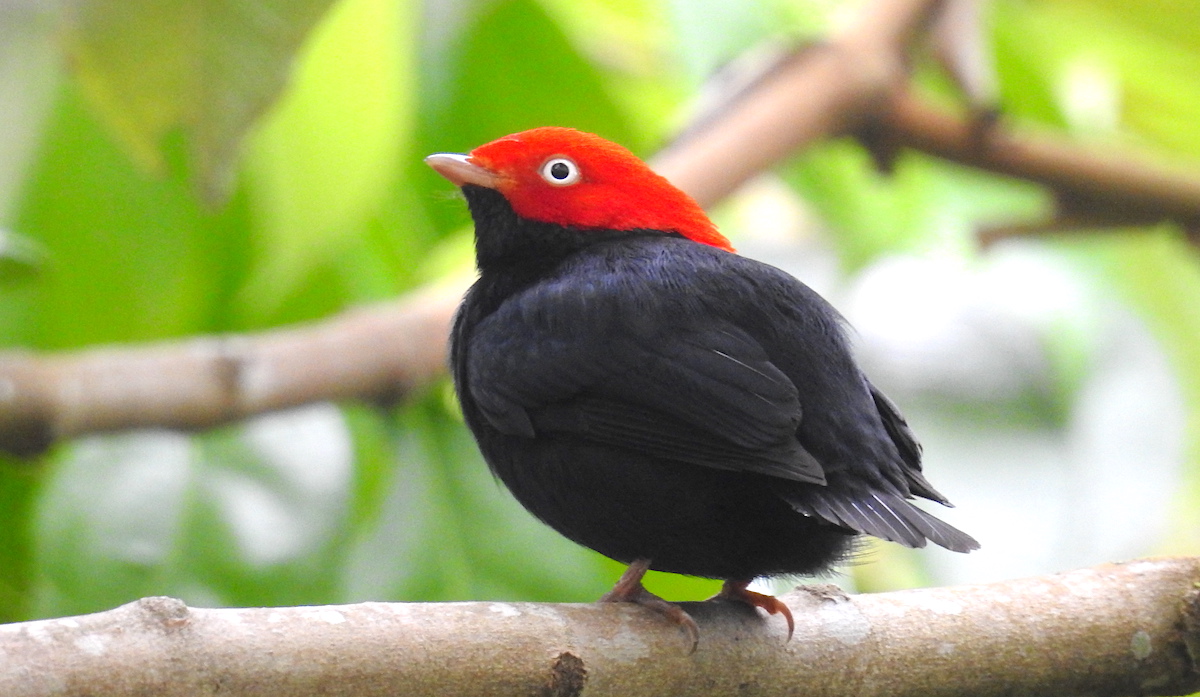
Round-tailed Manakin
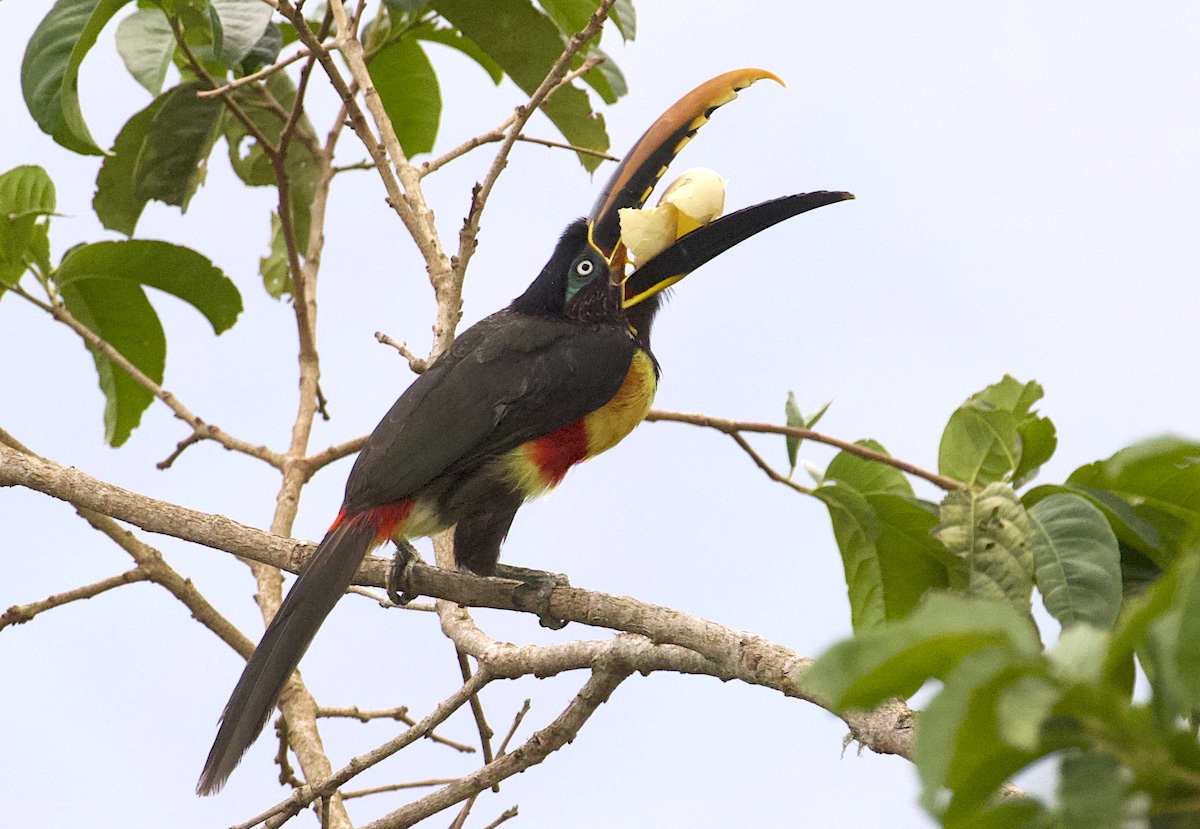
and Greedy Aracari
DAY 7 – Warm forest to bitterly cold mountain lakes
Needing no owls or nightjars – we have a lie in until 4 am. Then up from the Hacienda to pick up misses from a few days ago.
I fail to see the sicklebill yet again – but am the only one to see the TATUAPA TINAMOU cross the road. The birding was good – but nothing else new to me. Black-streaked Puffbird, Pale-Eyed Thrush, and greedy Chestnut-eared Aracari eating eggs were the pick of the bunch – before the longish drive to Lago Junin.
We arrive in time to bird the edges of the lake and pull out DARK-WINGED MINER and a full-on, iridescent in the sunlight – BLACK-BREASTED HILLSTAR.
We tried for the rail here but had not got torches or anything warm as the temperature was plummeting.
At least there is a nice warm hotel to go to. Dinner is delayed as Gunnar has locked himself in his room.
Hotel Junin must have inspired Disney’s “Frozen”. I have never been so cold anywhere in South America before. Fortunately, there’s a delivery of hot water bottles. I spend the night wrapped around mine like a mother with a newborn.
DAY 8 – Lago Junin
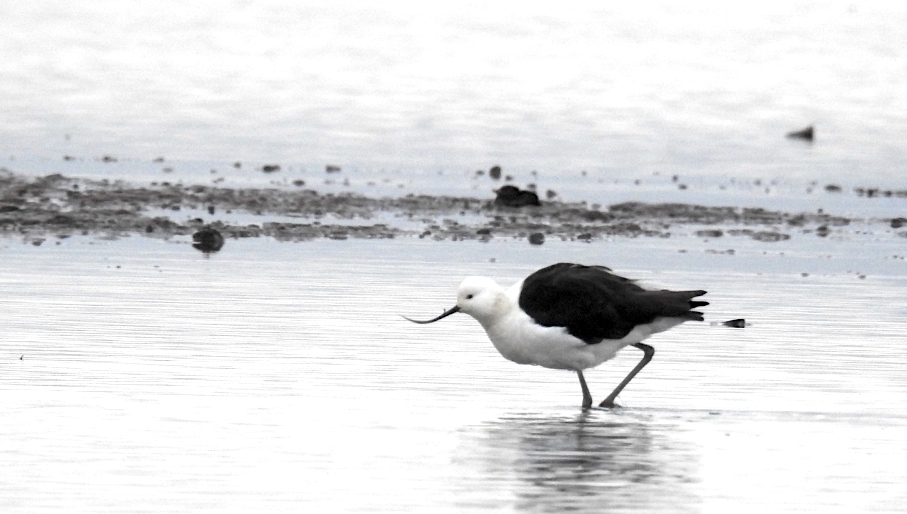
Andean Avocet
This is one of the 3 major spots on a Central Peru tour [ Bosque Unchog and St Eulalia being the other 2].
It did not disappoint. Last night’s reed beds finally served up its JUNIN RAIL and we drove to the “dock” to meet Cesar. “Senor Grebe” as he is better known here. It’s still brass monkeys though and I am in a new record of 6 layers of thermal clothing for the boatride. We missed it yesterday and had given up hope but ANDEAN AVOCETS were present soon after we set off. A total joy, and the last of the avocets for me, but the greater prize awaits. And in these situations, we see Silvery Grebe after grebe until Senor Grebe sees a courting couple – JUNIN GREBE. A special bird.

Courting Junin Grebes
It’s goodbye to Pete after this – he and Juan are off to Lima via Line Taxis – I get the rear of the van to myself now.
We are heading to a city called Huanuco as our base for the Unchog. Gunnar pulls in a RUFOUS-BACKED INCA-FINCH at a new spot on the way there.
DAY 9 – Trials and trails of Unchog
What you never seem to read about the Unchog from all the other reports is just how tough the walk back is.
The first clue is the walk down. And down, and down. But the usual birdy distractions keep your mind off it. Getting on to the flocks is the key here – they are lead by Citrine Warblers and contain all the smaller targets. THREE-STRIPED HEMISPINGUS and a few PARDUSCOs set us up, then at the bottom of the near vertical path we hear a cotinga. I luckily get on to it and G-meister scopes it – BAY-VENTED COTINGA.
The main target is playing hard to get so we split up for a bit to double the chances – no luck but OCHRACEOUS-BREASTED FLYCATCHER and a rubbish view of a GRAVE’S ANTPITTA keep the day ticking over. However no luck with 2 of the Big 3 here – so we will have to come back tomorrow. This is decided before the Hell-walk back up, so I can’t back out. A TSCHUDI’S TAPACULO and a NEBLINA TAPACULO can be heard above the sound of my breathless panting. We get them both.
Back at the van eventually – we drive to a nearby spot and get the BROWN- FLANKED TANAGER. A good day, but not good enough. Gotta do it all again tomorrow.
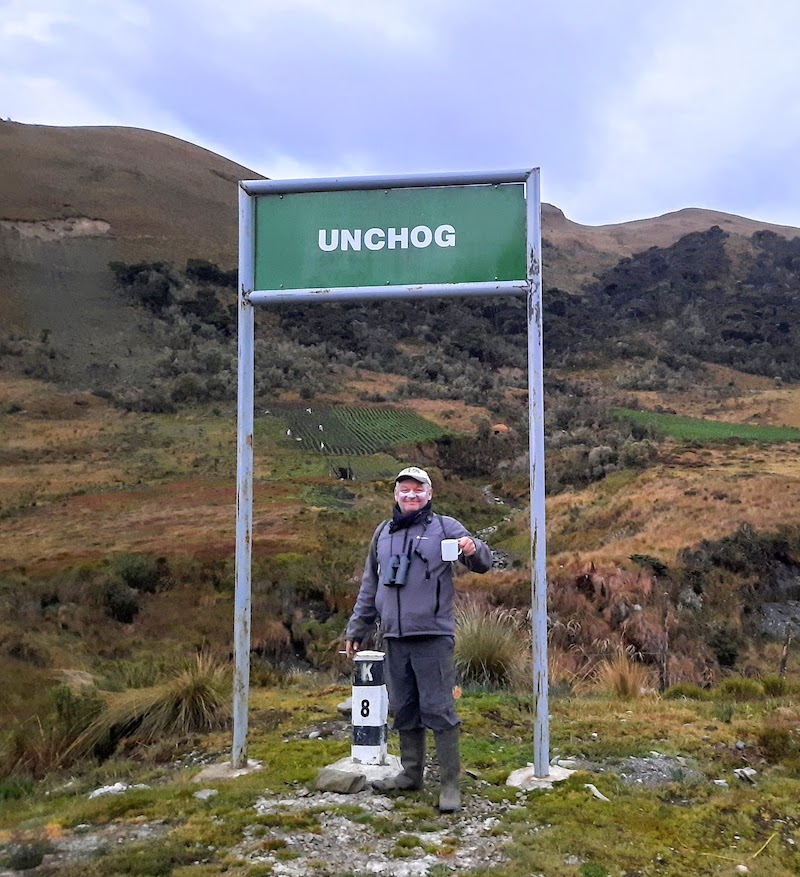 Smile now – you won’t be later
Smile now – you won’t be later
DAY 10 – Take Two
Elections are coming to Peru fairly soon. There were riots in Lima soon after my arrival to oust yet another President – but then there were some more riots to reinstate him. It seems there are more houses painted on the route to Unchog with political slogans than anywhere else. The reason is that due to a particularly high level of illiteracy in certain areas, the people vote by recognising a logo rather than reading a manifesto. But beware all those who enter Peruvian Politics. In the last 30 years – EVERY elected President is now either in prison, under house arrest, has committed suicide, or escaped to other countries to avoid facing charges. An incredible record and it makes our Western politics look vanilla by comparison.
We get the GOLDEN-BACKED MOUNTAIN-TANGER mainly through luck – and more luck. No Rufous-browed Hemispingus though. It will only be seen if I come back and do that bloody trail again. Fat chance!
DAY 11 – A long travel day
Another Bosque – another Antpitta. O’NEILL’S ANTPITTA, and yes another carve-out from the obscura Rufous department. Oddly named after the ex-Aston Villa and Ireland football manager, Martin O’Neill. This opens up a whole world of Footballers with Bird Names or vice versa, at your local Pub Quiz.
Clarke’s Weaver anyone – surely named after Alan “Sniffer” Clarke – Leeds and England 70’s star striker.
We get to our town near the Huascaran National Park late – but not so late that there’s not a Chifa open. I honestly think I have eaten more Chinese food in Peru, than any trip to China. At least it’s not that disgusting “cuy” – it seems to have been banned.
DAY 12 – Climb every Mountain
The trick here is to drive over the highest mountain pass, to get to the East face and some high trees just as the sun hits them – that’s when the cotinga should pop up and perch. We were in time and on time. But the cotinga wasn’t. There are other spots in St Eulalia in a few days. A real shame as I have never missed a cotinga – only the fruiteaters.
Gunnar tapes in an ANCASH TAPACULO that comes right to our feet, and I get the RUFOUS-EARED BRUSH-FINCH and D’ORBIGNY’S CHAT-TYRANT [Huddersfield FC 1953-56] Enough footy birds for now -Ed
But it is time to move back over the pass and down the mountain for other species. We find a nice patch and explore whilst Tony knocks up some more Italian based fine dining.
I see it first – and thanks to honing my bird skills these last 12 days, recognise the shape, and flight. It’s our cotinga. Gunnar fumbles through the calls and eventually plays the right one. And it comes in to 10 feet away. WHITE-CHEEKED COTINGA. Awesome, I keep my 100% record.
A short walk later down a so-called 1km trail – which was nearer 4 km and rocky and wet and dangerous produces PLAIN-TAILED WARBLING-FINCH and a letter of complaint to the Parks Authority for clear misrepresentation. I await my day in a Lima court.
Our final spot is for the well-known Sp Nov Canastero near a town called Pueblo Libre in Ancash. But there’s a sad tale here – its habitat has been totally decimated. Just a tiny patch left. The offender? Peruvian Blueberries – they are big and juicy and the worlds’ need is going to kill this poor bird before it even has a name. Right now it’s a pale-tailed, but that has been sucked into creamy- breasted, but it’s a good species. It just won’t be around for too much longer to be correctly taxonomised.
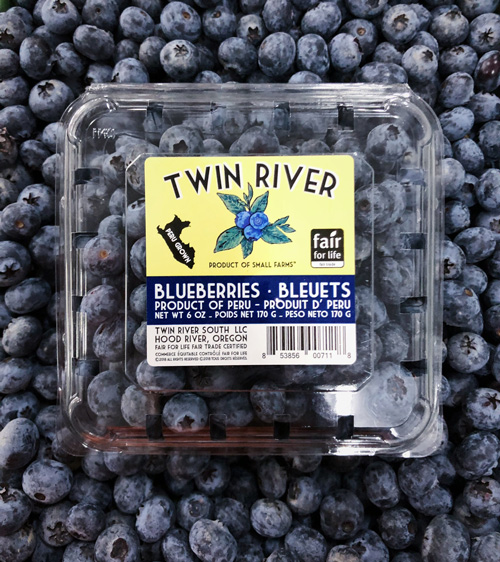
Canastero Killers
DAY 13 – Closing out the Comets
Today is our last day on the Eastern slope of the Andes. We are heading down the west side and to the coast. Tonight we shall stay by the ocean. So – last chance for all the altitudinal birds. The first site is a special Gunnar spot he explored a while ago, a right turn off the road to Patavilca, signposted Aisha.
Tony slams on the brakes as he has seen something – but just a mix of Mourning and Ash-breasted Sierra-finches – however on the other side of the road there’s a busy looking hummer in a stand of bushes. Glory be! It turns out to be the BRONZE-TAILED COMET – my last one needed. There are not that many of them in reality so celebrations are muted. I will go crazy if we get the other hummer here.
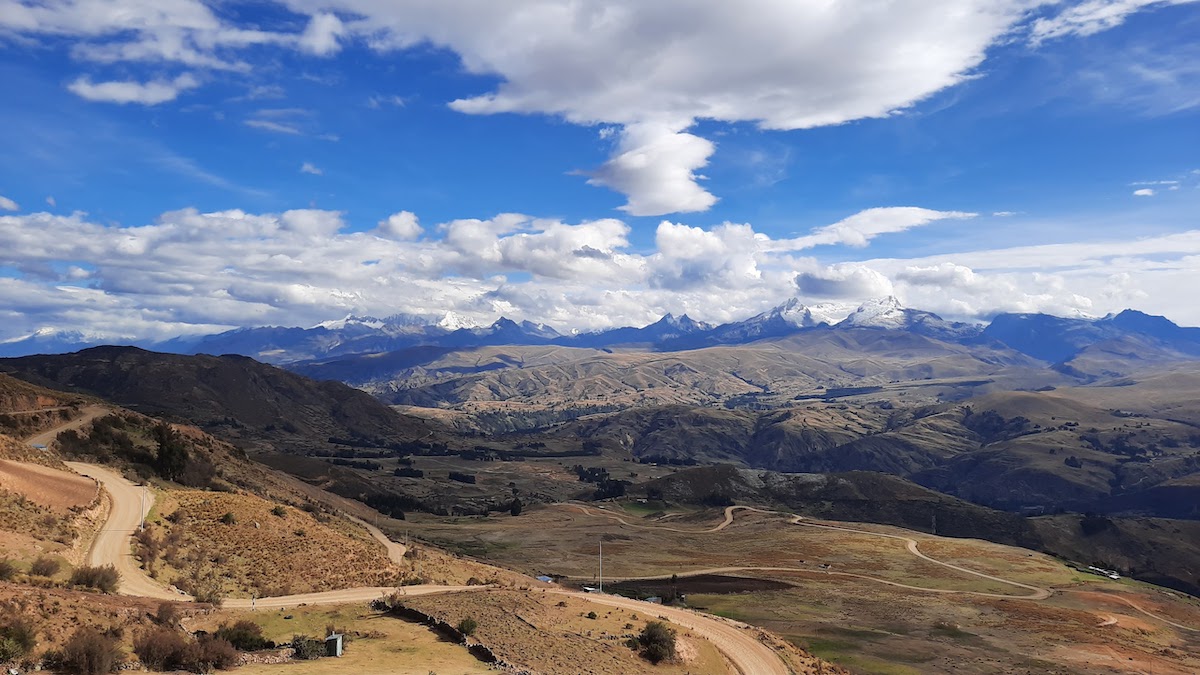
A breakfast view of the Eastern Andes
Another canastero calls and it comes up to tape – STREAK-BACKED CANASTERO – a good find as it also means I will never have to go up Papallacta Pass in Ecuador ever again, as it is a good spot for them too. 2 newbies before breakfast – and late in the tour. It should be a good day.
It is – a STREAKED TIT-SPINETAIL soon follows, but sadly all the flowers that the hummer likes are dry and wilting. Time is running short as we are descending now – but a last Hail Mary by a thicket of the correct plant – but 2 months too late does get us GREEN-HEADED HILLSTAR.
The last of this genus too for me [and that includes the new one in Ecuador]. The setting is right [lightly gravelled flat road], the scene is right [awesome backdrop]. Cue New Bird Celebratory Dance.
We push on to Conoconcha, lower down the West side – Tony has remembered the spot where Pete and Juan got it before I came – and right on cue – CORDILLERAN CANASTERO. All cocky-tailed and low rock perching. Perfecto. That is a fair number of canasteros so far – I hadn’t realised how many there are out there.
The rest of the drop to sea level brings only a poor view of a RUSSET-BELLIED SPINETAIL and Collared Warbling-Finch before we see the sea at Paraiso Lagoon and as many as 2000 flamingos and all the ducks a man could want. About 50 Great Grebes are offshore, one trying to eat an eel as long as its own neck. Sadly the Peruvian Terns are not in town.
We eat a fish-themed beachside lunch looking a bit odd as we are in full birding rig – whilst the locals are in bikinis that struggle to keep their excess flesh under wraps.
Time to head down the coast to a little port town for the night – but thanks to Covid, all the decent restaurants are shut – except the reliable Chifas. Special Fried Rice once again – it’s lucky I love it.
DAY 14 – Dry Lomas – the home of Pikachu
Lomas de Lanchay is a well known bird spot. It’s a desert but fed by the moisture from the fog that rolls off the Pacific. Unique habitat that is slowly being taken over by humungous chicken-farm warehouses. Gunnar had scoped the back-entrance last night as there had been some construction in the area. We had found the way in for today. You work this reserve by going up the back of it first for a couple of birds – then the main entrance later for some easier species and the chance of toilets and the café. But…despite yesterday’s check out – we had failed to see a huge culvert with running water that prevented any vehicle from accessing the rear. I looked at Gunnar – “So what do we do?” I asked. “We have to walk – about 4 k. Then we have to walk up the sides of the valley.” Bummer – it just used to be a 15-minute drive.
The topography reminded me of the Sinai in Egypt. There were cactuses everywhere and that beautiful desert silence, so rarely found now. It took us 4 hours in the end – but we got OASIS HUMMINGBIRD, CACTUS CANASTERO, and the GRAY MINER. But there was an odd mammal there too. A Viscacha. Pointy ears, rabbit-like and a Z-shaped fluffy tail. I am not too old to not see the resemblance. The web backed it up later. A Pikachu in shape – but not in colour. At least my kids will like the story.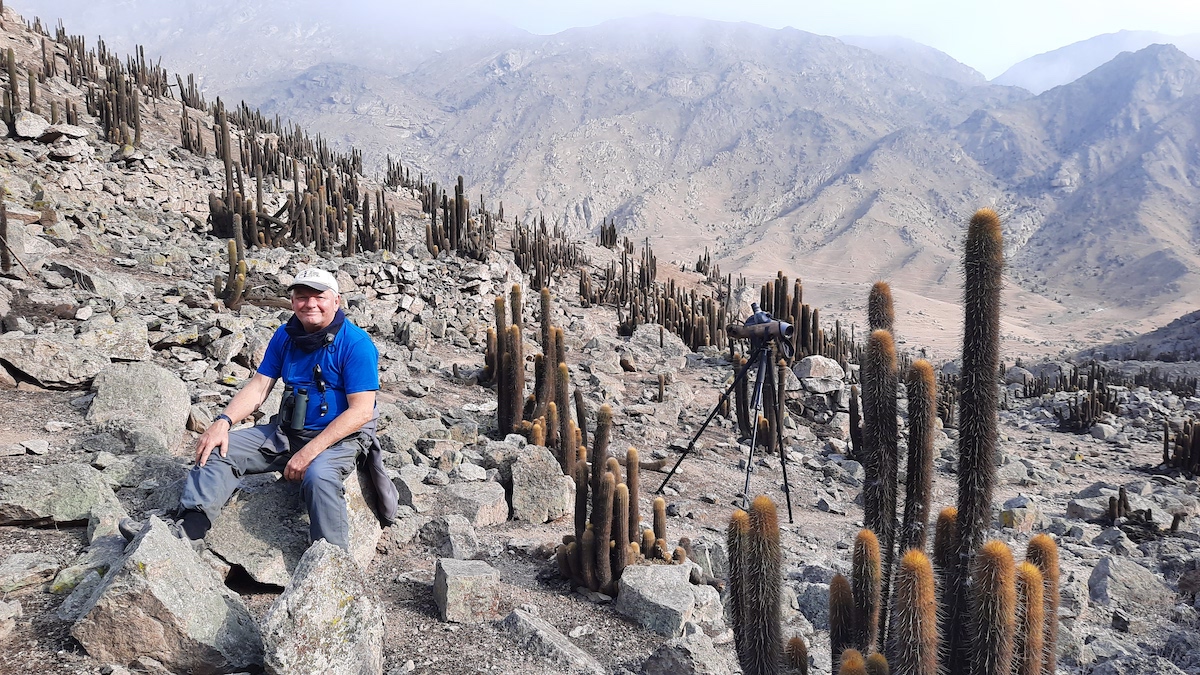
Cactus Man cometh
We would be a bit late for the front end now. Nothing showed, we missed the other miner – Thick-billed. Park entry, bizarrely, was accompanied by an actual blue ink thumbprint. A first for me at a national park – a second in life after an arrest in Kensington as a student. With my dabs on file here in Peru, that also ends any criminal enterprise I could have thought up between now and departure.
We lunched at Gunnar’s special place – a little seafood house by a gas station. The best ceviche a birder could ever eat.
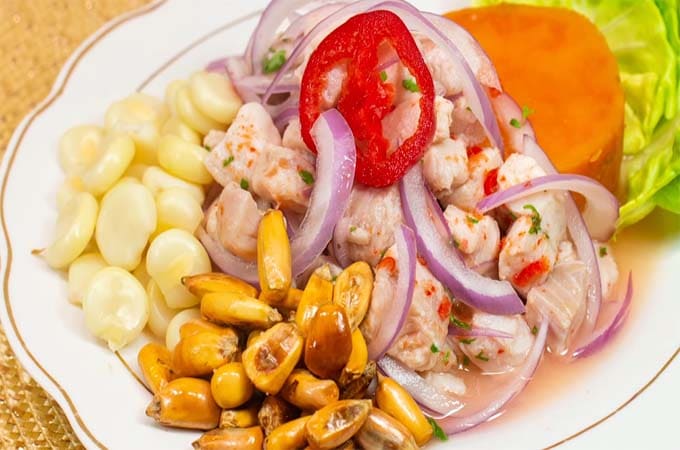
Proper Ceviche – odd shaped corn though.
I was put up for the next 3 nights in the coolest part of Lima – Barranco – at a boutique hotel run by charming Italo-Peruvians with a penchant for antique furniture. This would be the springboard for 2 days up the St Eulalia Canyon.
DAY 15 – A slow crawl
It was a 3.30 a.m departure. The night porter woke with a scream when I shook him to open the barred front gate. The team was on time – and so to the Central Highway again going east – I had come full circle.
All was good for half the journey until we hit a traffic wall moving at 3 kph. This was going to put us hours behind schedule. We found the cause after 2 hours of infuriating slowness. They were moving two 22 wheeled trucks with what looked like a space shuttle on each one. They had been trundling up this darn road all morning and were the complete cause of the 10 kilometre tail back. It was almost lunchtime by the time we got to the Marcapomacocha Road and the DSP spot.
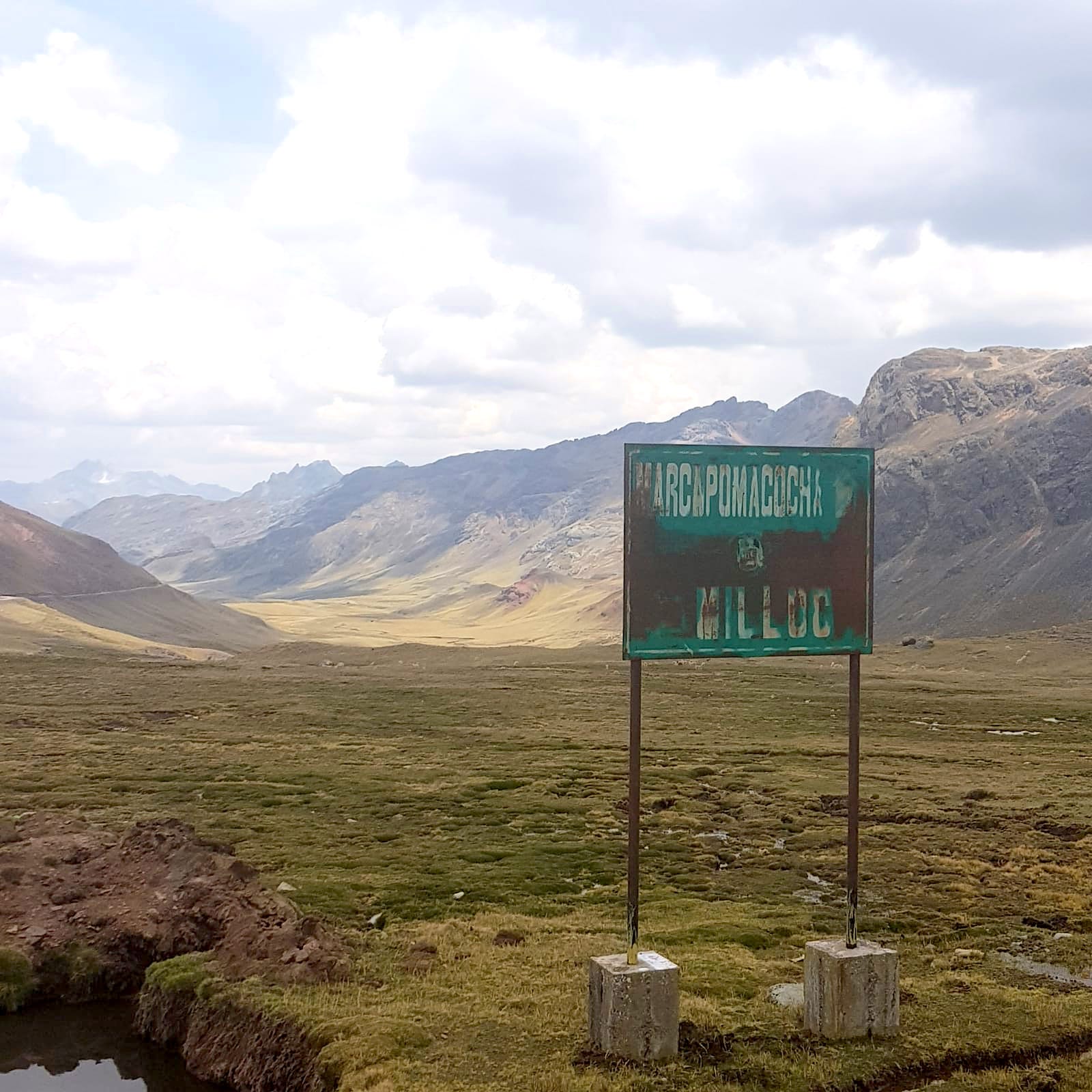
DSPs here – but for how long?
There’s not much of the bog left now where these birds inhabit – swathes of peat have been cut out and stolen for the bloody blueberry farms. Still, we looked and Gunnar’s good eyes got me onto one of those legendary birds we all have to see – DIADEMED SANDPIPER-PLOVER. The pair had been here for many years – and when the peat theft continues – it will have to be Chile for this species.
https://www.youtube.com/watch?v=BAjzUKpC3xk
A long loop of the highland road gets us another canastero – JUNIN CANASTERO easily to playback and a PLAIN-BREASTED EARTCHCREEPER amongst the ruins of an Andean farmhouse. After a field lunch of “sardinas con salsa tomate y pan” – we move to the final finch spot – but get a BLACK METALTAIL thanks to Tony’s 20/20 vision. Finchy proves a bit tricky but eventually, it shows with a group of Sierra-finches – GREAT-INCA FINCH. It was quite small actually – I thought it would be bigger with that name.
We headed back to Lima, but most birders stay up high to sort their acclimatization. By the way – if you need acetazolamide – it’s over the counter in all pharmacies in this area.
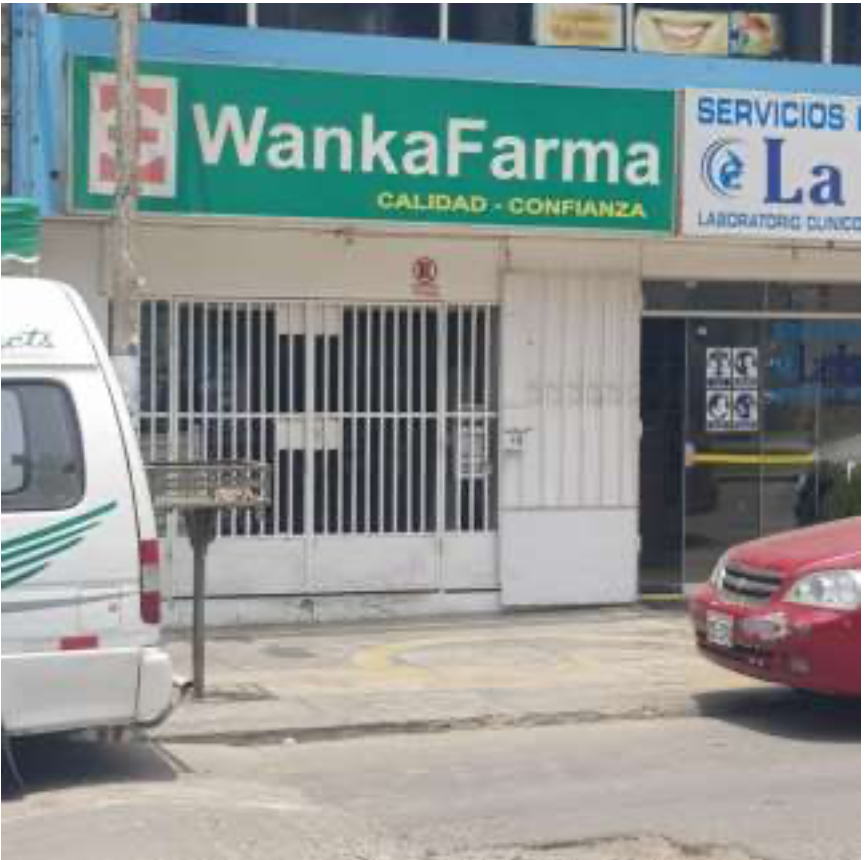
A typical Peruvian pharmacy – serving most birders needs
DAY 16 – The Last Day
Another 3.30 am’er and the night porter is up and ready this time. The run up to St Eulalia is much faster this morning – Peru’s space programme must have finished set-up.
We are at the spot for the last few specials and RUSTY-BELLIED BRUSH-FINCH is quite common. There’s one more canastero and it proved to be a toughie – it flew in to call but remained hidden for the next few hours – but my view of its fly-in was good enough – CANYON CANASTERO – there can’t be any more left of this species – surely.
A quick PIED-CRESTED TIT-TYRANT was the finale here so back to Lima to try a spot south for a Raimondi’s and a Thick-billed Miner.
It never happened – the politicians had decided tomorrow was a no-drive day “because of Covid”* – so everyone with a car was “panic-driving” today. The roads south were jammed – we gave up and hit some local ssp’s.
*2020’s most said 3 words
Gunnar offered an early morning city-search for a Tschudi’s nighjar at 4 am but all we saw was a guy trying to steal a car.
I flew back later that morning to Quito and had checked in for the flight to Sweden when KLM cancelled my whole return journey.
Thanks to Iberia I am at home now.
A great trip – a lot of new birds and way better than sitting in London Lockdown.
Thanks to Gunnar and the team – I shall be back with Kolibri Expeditions in January for “More Birds”!
Jules Eden, London. Dec 2020
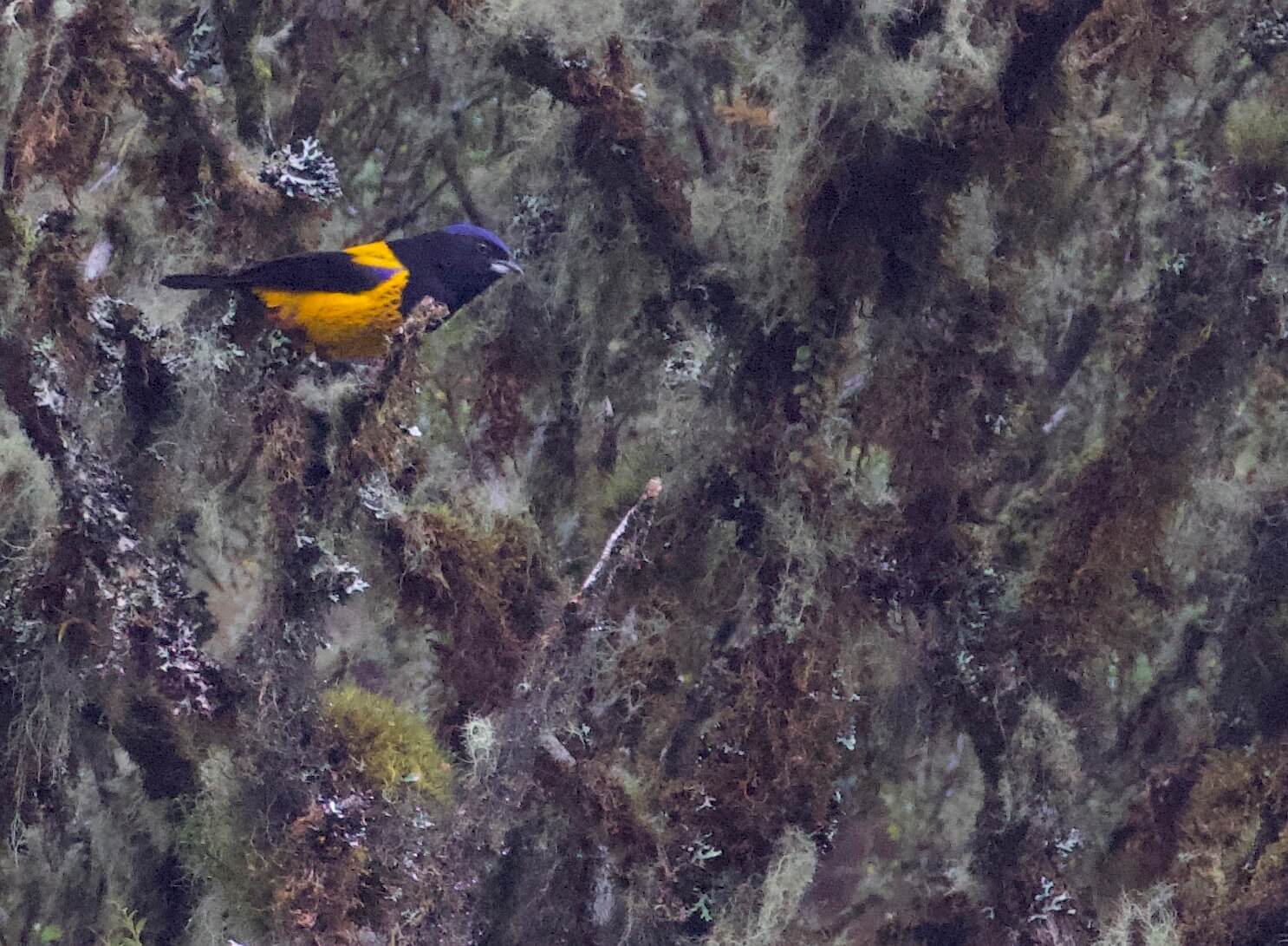
Raison d’etre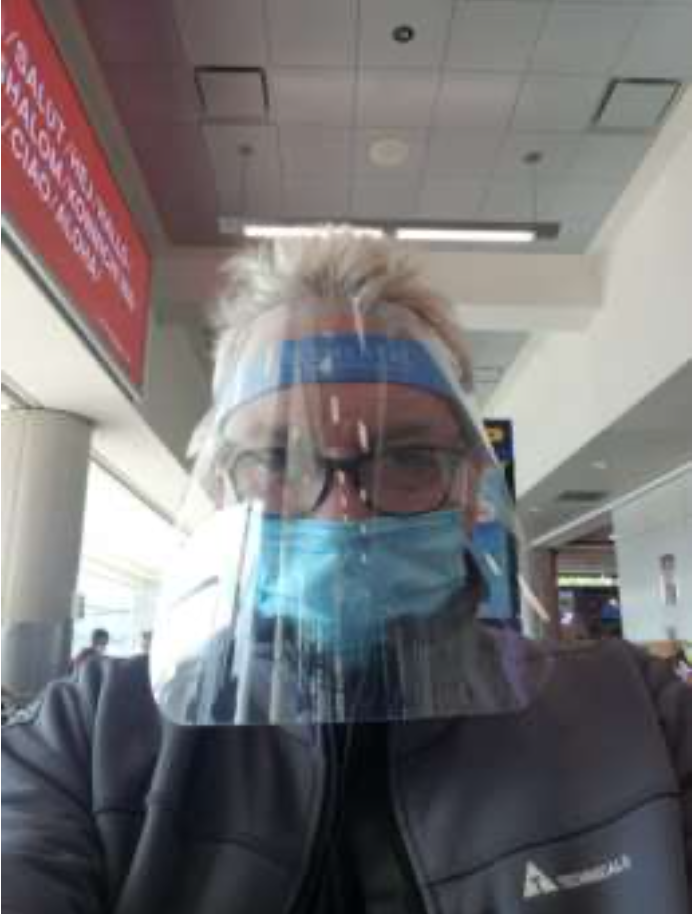
The author awaits the flight to Lima

What a trip! Great information and the images that you left in this article are wonderful. Thanks for sharing.
Thanks Scott!